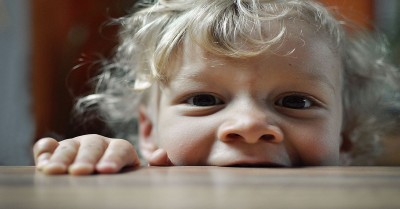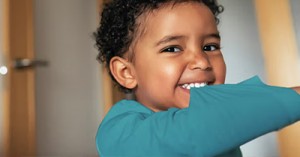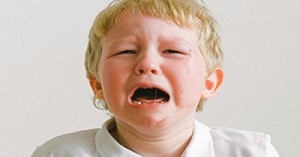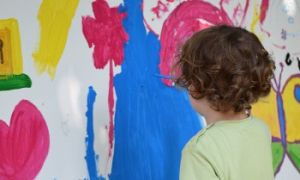Among the most contentious issues in early childhood, settings are biting, though it is widely acknowledged by early educators and behavioural experts to be a common feature of the toddler years. Here are some guidelines to help you and your service respond to incidents of biting.
Ensure that your service policy and procedures are in place. This not only lets educators know how to immediately respond to biting incidents but also makes them aware of related procedures involved, like communicating to families or filing an incident report.
- Attend to the child that was bitten
- Physically comfort them and reassure them with soothing words; attend to the wound, if any.
- Use appropriate behavioural guidance strategies
- Avoid giving immediate attention to the child who had bitten, as this would only reinforce negative attention-seeking behaviour. At the right time, establish eye contact as you speak clearly and firmly to them that such behaviour t is unacceptable but do not mete out any punishment.; it is important for all educators to be consistent in response to biting, like using the same words and behavioural guidance strategies.
- Offer appropriate positive encouragement
- As soon as possible following the biting incident, acknowledge the child who bit for any positive behaviour unrelated to the biting; for example if the child has been interacting kindly with other children or engaging in self-directed play, acknowledge and encourage these behaviours.
Document The Incident
Record details of where, when, who and what happened before and afterwards. Regular documentation will help you identify patterns or triggers to determine the cause without any preconceptions or biases. It may emerge that biting is not only caused by hunger, tiredness, or teething as you may have thought but also in response to overcrowding, frustration and even overexcitement.
Critically Review The Learning Environment
Minimize frustration arising out of waiting or competition for toys by providing duplicates of favourites; reduce under stimulation by designing an engaging physical environment and ensuring that equipment is available and not put away. At the same time, plan for some quiet time and calming space to reduce the chances of biting due to overstimulation. Have children play in small groups and use routine and repetition to have a calming effect. Consider playing soothing music or planning relaxing activities when kids are likelier to be tired and irritable.
Consider Appropriate Supervision Strategies
Check if you need to adapt your supervision strategies by physically locating yourself from where you can quickly intervene and re-direct; see that all children are attention from adult caregivers; look for routines like nappy changes to give each child one-to-one interaction as well.
Social and Emotional Learning
Use the curriculum to intentionally teach a range of social and emotional skills so that children know how to join in games or interact with peers without taking recourse to negative attention-seeking; also emotional skills can teach them how to safely express feelings or to use words and gestures to discourage a potential biter.
Collaborate With Families
For any response strategy to be effective, it is imperative that parents are brought on board. Engage with the parent(s) of the child who bites and explain your service’s approach to biting; also use this as an opportunity to explore why the child might be biting and then reassure parents by describing how their child will be supported to reduce such behaviour. Reassure all parents that while biting is common in toddlers, you and other educators are actively working to keep all children safe.
Further Reading: Biting Child
Reference:
Toddlers and Biting, ACECQA







 As an Educator in Australia, your pay rate falls under the Children’s Services Award 2010. This award states the minimum amount that an employer can
As an Educator in Australia, your pay rate falls under the Children’s Services Award 2010. This award states the minimum amount that an employer can When working as a qualified Early Childhood Teacher (with a university degree) within a service, your rate of pay will come from the Educational Services
When working as a qualified Early Childhood Teacher (with a university degree) within a service, your rate of pay will come from the Educational Services When working as a Diploma Qualified Educator your pay rate is from the Children's Services Award 2010. This Award states your minimum rate of pay
When working as a Diploma Qualified Educator your pay rate is from the Children's Services Award 2010. This Award states your minimum rate of pay When working as a Cert 3 Qualified Educator, your pay rate is from the Children's Services Award 2010. This Award states your minimum rate of
When working as a Cert 3 Qualified Educator, your pay rate is from the Children's Services Award 2010. This Award states your minimum rate of Educational Leaders play a crucial role in their early childhood service by ensuring that the educational program aligns with best practices and supports the holistic
Educational Leaders play a crucial role in their early childhood service by ensuring that the educational program aligns with best practices and supports the holistic In early childhood education and care, ratios are more than a technicality—they are a frontline safeguard. Every child deserves responsive supervision, emotional connection, and developmental
In early childhood education and care, ratios are more than a technicality—they are a frontline safeguard. Every child deserves responsive supervision, emotional connection, and developmental With the new national child safety reforms kicking in on 1 September 2025, early childhood services like yours have a real opportunity to lead the
With the new national child safety reforms kicking in on 1 September 2025, early childhood services like yours have a real opportunity to lead the Here’s a comprehensive Mobile Phone and Smart Watch Policy tailored for early childhood education and care (ECEC) services in Australia, aligned with the latest 2025
Here’s a comprehensive Mobile Phone and Smart Watch Policy tailored for early childhood education and care (ECEC) services in Australia, aligned with the latest 2025 The Sea of Fish Challenge is a national initiative that invites children, educators, families, and communities to create and display fish artworks as a symbol
The Sea of Fish Challenge is a national initiative that invites children, educators, families, and communities to create and display fish artworks as a symbol Across the early childhood education and care sector, educators are sounding the alarm: current staffing ratios are insufficient to deliver safe, meaningful, and developmentally appropriate
Across the early childhood education and care sector, educators are sounding the alarm: current staffing ratios are insufficient to deliver safe, meaningful, and developmentally appropriate


